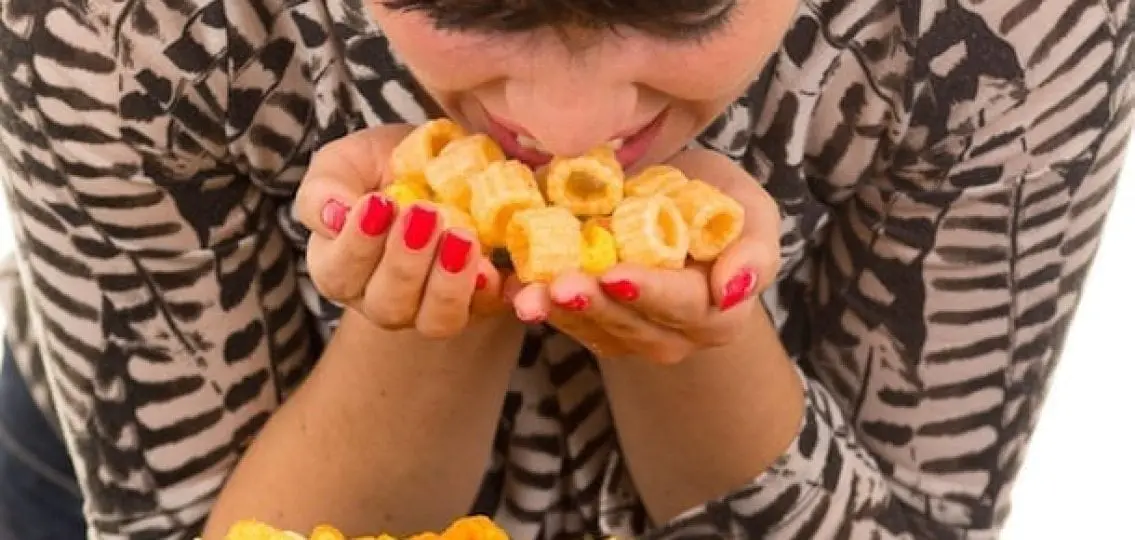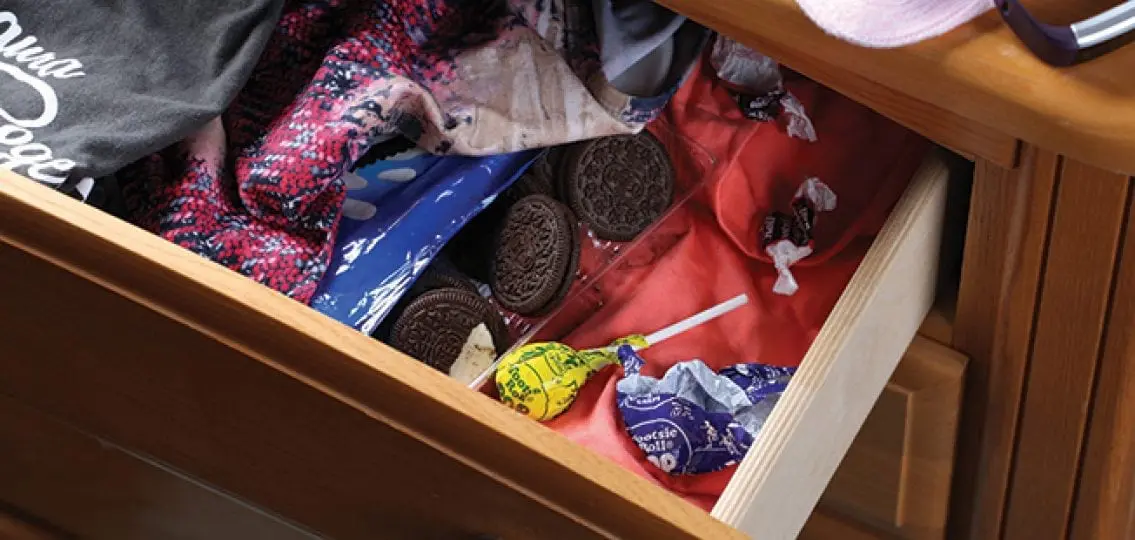Once upon a time, you may have managed your child’s snack choices, rationed treats, and doled out healthy nibbles after school. Now, it may seem that the only way to track your tween’s snack habit is by following the trail of crumbs, empty bags, and wrappers. You may not see them eating between meals, but you find evidence everywhere—even under their pillows.

Most tweens and teens need one or two snacks daily to meet nutritional needs, according to the Academy of Nutrition and Dietetics, but when your tween appears to sneak snacks behind your back, it can feel deceitful or unhealthy.
Why Your Teen Is Sneaking Snacks
Your instinct may be to try to curb the behavior, but experts say surreptitious snacking is actually your tween’s effort to assert independence, and attempts to restrict and control snacks will only make the forbidden fruit more appealing.
“The tween years are the years when kids start to affirm their own authority; they want more control of the world around them,” says Jennifer Powell-Lunder, a clinical psychologist who writes the “Let’s Talk Tween” blog for Psychology Today.
“At that age, there’s not a lot you can control. You do control what you eat,” Powell-Lunder tells parents.
Tweens who sneak food may actually snag snacks as a way to test household rules—and parental resolve—by eating them whenever and wherever they want, Powell-Lunder says. So, if your house rules mandate that food must be kept in the kitchen to avoid an ant invasion, explain this to your tween and make sure to enforce the rule.
But if you limit between-meal snacks because you fear your tween will spoil their dinner appetite, you may need to rethink your expectations.
After all, tweens and teens are growing more than they have since toddlerhood, and they actually are hungrier during these years, explains Powell-Lunder. Consuming extra calories with between-meal snacking becomes a nutritional necessity.
“They eat like there’s no tomorrow,” she says. “They’re like bottomless pits.”
The key is to keep lots of healthy snack options on hand. Since tweens long for empowerment and will be more likely to eat something if they pick it out themselves, you should consult your tween about which healthy snacks to buy.
Be on the Alert for Bigger Issues
While you want to give your tween some autonomy with their snack choices, be aware that hoarding or hiding food can indicate an eating disorder or emotional issues, cautions Powell-Lunder.
“There’s a big difference between a kid who sneaks a couple of cookies and a kid who eats three boxes,” Powell-Lunder explains. “When a kid who’s having social issues at school comes home and eats a lot of food, it becomes obvious that this is a kid who is eating their feelings.”
If you’re familiar with your tween’s eating habits, it will be easier to assess whether extra snacking signals a growth spurt, an effort to test boundaries, or something more serious—such as emotional or social problems.
Avoid Restricting Certain Foods
If it’s necessary to change your tween’s snacking behavior, be moderate, thoughtful, and strategic, suggests Brandi Rollins, who conducts biobehavioral health research at Pennsylvania State University.
When parents restrict goodies, it increases a child’s appetite for the taboo foods, according to Rollins’s research. If parents provide guidance on nutritious eating and allow some snacks, rather than prohibiting them completely, tweens are more likely to learn to how to regulate their snacking and embrace healthy eating habits, Rollins says.
“Restriction simply doesn’t work, and it really doesn’t work when your child has ready access to these foods outside of the home,” she says. “Even though you may be strict in the house, your tween can go out, and they can eat really whatever they want.”Our experts offer the following advice to keep your tween on a healthy snack track.
7 Tips to Promote Healthy Snacking:
- Plan snack purchases with your tween—take them grocery shopping, and read the ingredients on packages before you buy them.
- Cook together when possible.
- Let your tween pack their own lunch, with your guidance.
- Model good snack habits. When your tween sees you eat a treat, they’ll want it, too.
- Don’t have food in the house that you don’t want your tween to eat.
- Discuss the benefits and disadvantages of various food choices. For example, sugar intake can influence mood, while protein provides endurance.
- Create a snack cabinet full of healthy options that your tween can access any time they’re hungry





